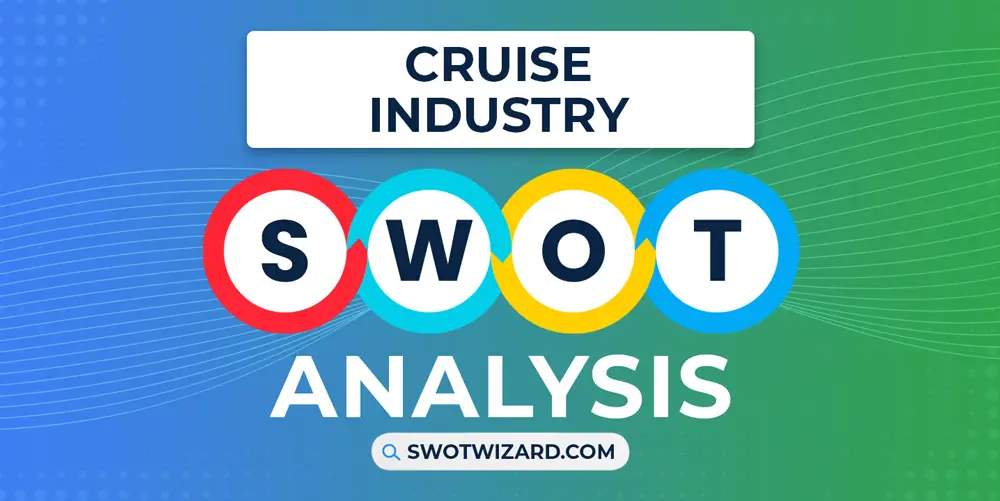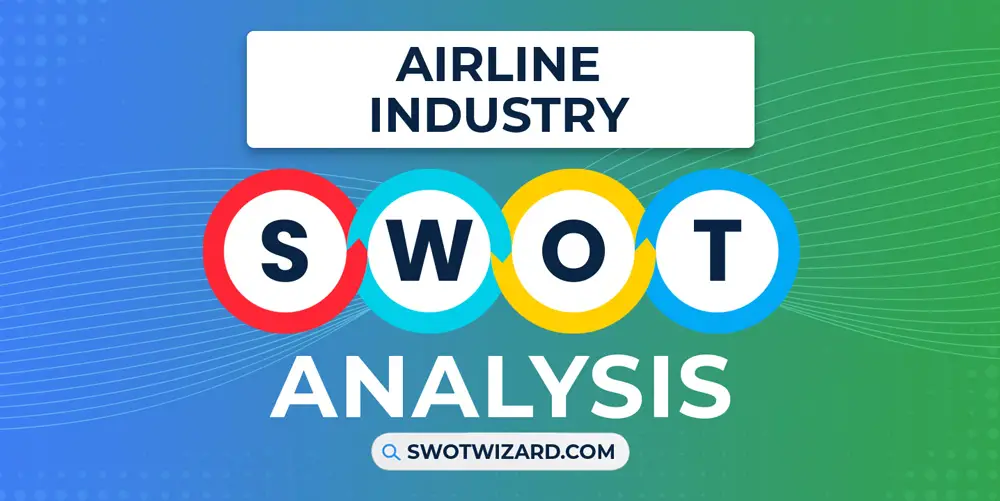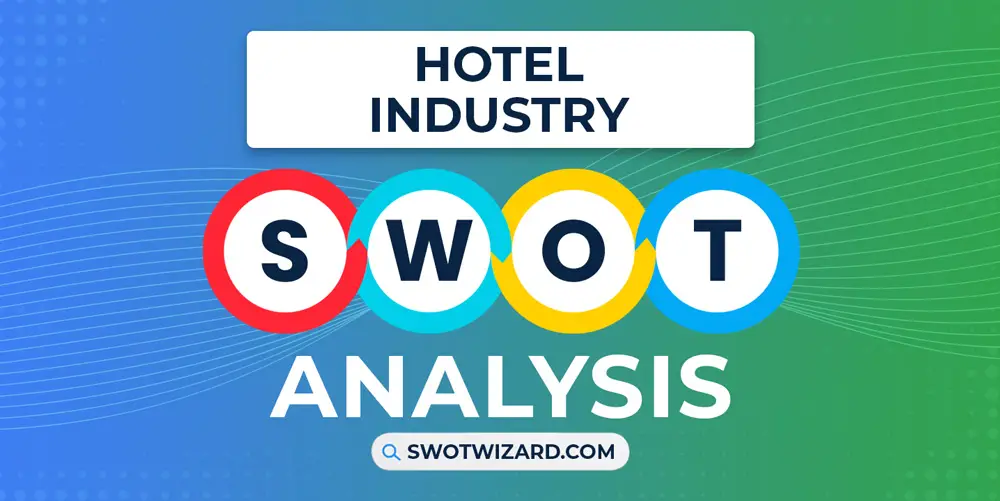The cruise industry has changed the way people perceive the water or sea journey and turned it into one of the most relaxing and profitable business people could’ve ever imagined. In this world of globalization, not just goods travel a thousand miles, but also people, and that’s all for entertainment and fun. And we will get to know all about that in this cruise industry SWOT analysis.
Cruise Industry Overview
The modern cruise industry traces its origins to the 1960s when brands like Carnival Cruise Line initiated affordable Caribbean leisure voyages for the masses. Since then, the sector has steadily grown into an over $150B industry with over 300 ships operated by over 50 brands worldwide. Today’s mega-ships with capacities exceeding 6,000 passengers and 2,000 staff members offer extravagant amenities from casinos to water parks, and the industry directly employs over 1M staff in total, supporting this popular vacation segment.
Competitors in Cruise Industry
Carnival | Royal Caribbean | Norwegian Cruise Line | MSC Cruises
Did You Know?
At an estimated cost of $1.35B, Royal Caribbean’s Wonder of the Seas, which debuted in 2022, is the most expensive cruise ship ever built.
Strengths – Cruise Industry SWOT Analysis
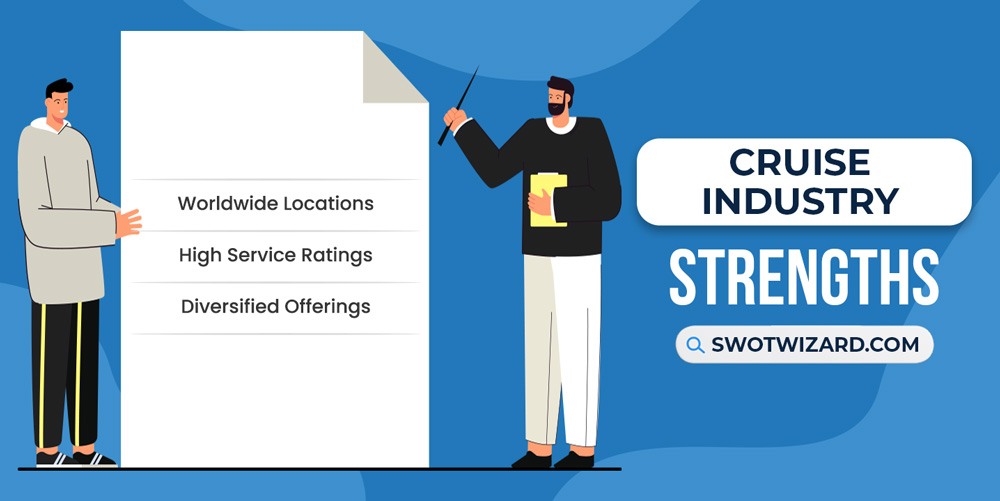
Worldwide Locations: Cruise companies offer itineraries spanning the globe, from the Caribbean to Europe, Alaska, Asia, Australia, and remote destinations like Antarctica. From the data, market leader Carnival cruises to over 700 ports on 7 continents, appealing to travelers seeking diverse destinations.
High Service Ratings: The cruise sector ranks consistently high in guest satisfaction surveys. As per the data, Clia’s 2022 survey showed an average service rating of 8.28 out of 10 across 25 major cruise companies, evidence that most cruises deliver positive and enjoyable experiences meeting traveler expectations.
Diversified Offerings: Contemporary, premium, luxury, river, and specialty cruise options cater to different market segments. Besides, coupled with wide-ranging onboard amenities from Broadway shows to zip lines, water parks, 20 dining venues, spas, and nightclubs, cruise passengers can customize experiences to their interests and budget.
Weaknesses – Cruise Industry SWOT Analysis
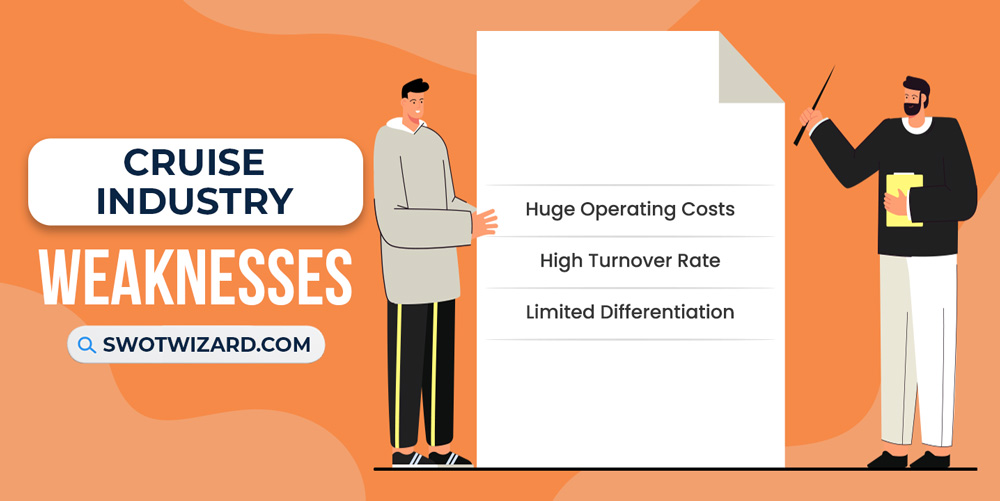
Huge Operating Costs: These floating cities incur very high expenses, including fuel, food & beverage, insurance, port charges, staff, and maintenance. If we look at the data, daily operating costs for Royal Caribbean’s Harmony of the Seas ship are estimated at $600K. As a result, thin margins leave companies financially vulnerable.
High Turnover Rate: The industry average annual turnover rate of crew members often exceeds 60% across major cruise lines, resulting in continual recruitment and training costs. To give you a better understanding, Carnival employs over 150,000 shipboard staff to manage the ongoing churn.
Limited Differentiation: Contemporary mass-market cruise brands offer generally comparable Caribbean itineraries, amenities, and rooms lacking unique selling points. According to a 2022 JD Power survey, just 57% of cruisers strongly agreed that ships/services exceeded expectations, hinting at augmentation opportunities.
Opportunities – Cruise Industry SWOT Analysis
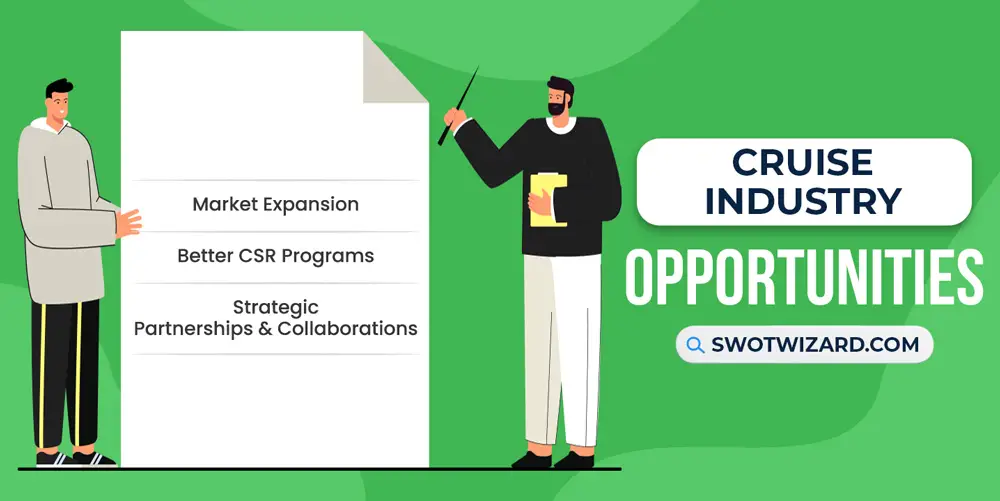
Market Expansion: Major potential exists to expand the cruise market in emerging regions like Asia and Australia. While North America accounts for over 60% of cruisers, the Australian market has grown 73% in the past decade, signaling untapped potential. As a part of the plan, the strategic deployment of newer ships catering to specific traveler segments could also accelerate growth.
Better CSR Programs: Cruise lines can attract eco-conscious vacationers by advancing sustainability initiatives spanning renewable energy systems, waste management enhancements, and responsible tourism partnerships. Oceania Cruises’ new Vista ship exemplifies progress with energy-efficient engines and systems reducing emissions by approximately 25%.
Strategic Partnerships & Collaborations: Savvy revenue management leveraging dynamic pricing algorithms, brand differentiation, travel agent agreements, and multi-year government volume contracts could boost margins while maintaining affordability. Data shows contemporary brand ridership bounced back quickly post-pandemic, aided by competitive pricing and pent-up demand.
Threats – Cruise Industry SWOT Analysis
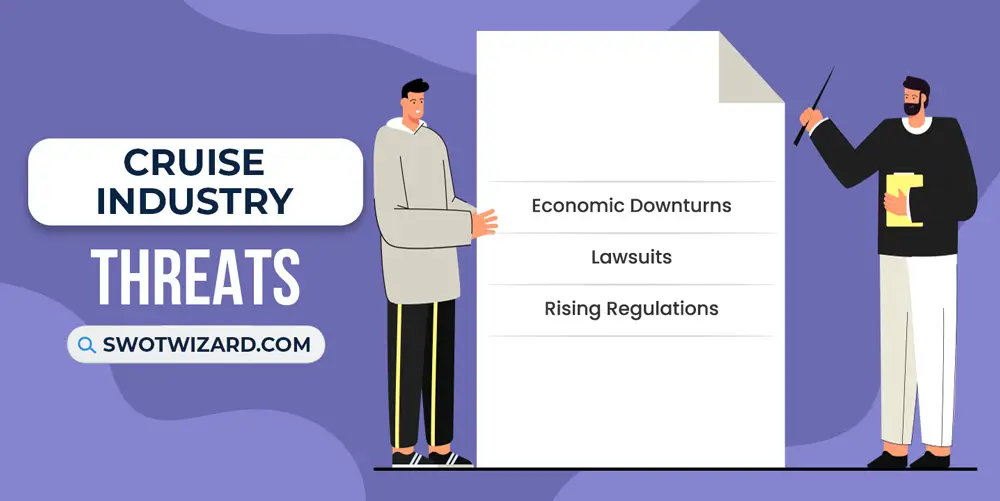
Economic Downturns: As a luxury discretionary spend, cruises are vulnerable in recessions when consumers limit vacations and favor discounted staycations. During the 2008 financial crisis, North American cruises suffered a net loss of 5M passengers as households reduced expenses.
Lawsuits: Major lines face class action suits regarding illness outbreaks, environmental violations, and safety issues. Since 2016, Carnival Cruise Line has paid over $2B related to ecological violations and accident settlements, underscoring rising legal and compliance risks.
Rising Regulations: Recent emissions violations have led ports to restrict visits until improved compliance. As a result, Industry observers expect tighter regulations around fuel standards, waste management, and health protocols post-COVID, adding operating costs. As a matter of fact, non-compliance could constrain voyage planning and growth strategies while driving expenses higher.
[Bonus Infographic] SWOT Analysis of Cruise Industry
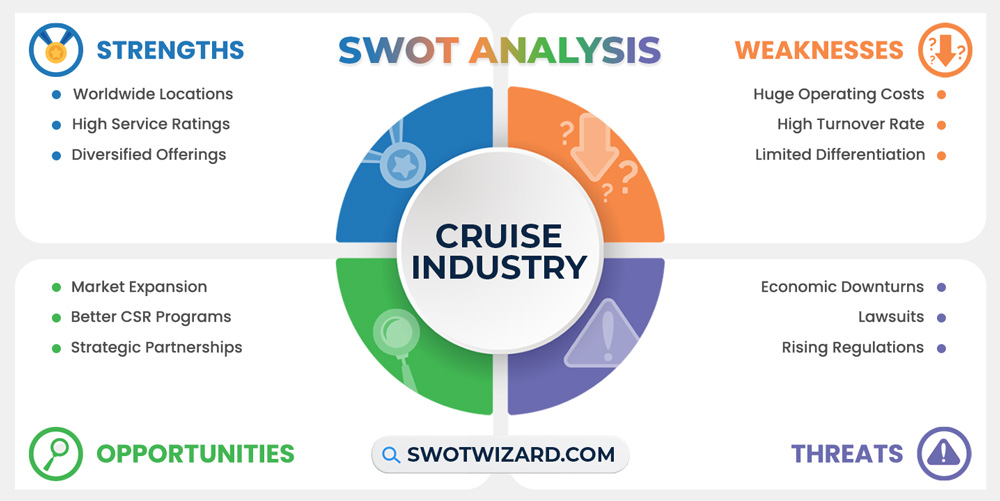
Recommendations for Cruise Industry
Here are some recommendations for the future cruise industry to thrive;
- Collaborate across supply chains for responsible sourcing and green maritime operations to align with environmental stewardship expectations.
- Deploy modernized ships from contemporary brands tailored to market preferences for shopping, dining, and entertainment.
- Solidify multi-year agreements with domestic government worker unions and large trade organizations for events, conferences, and incentive trips.
- Analyze expected rule changes around emissions, waste management, and health protocols to assess operational and cost impacts.
Frequently Asked Questions (FAQs)
Which are the top 2 markets of the cruise industry?
The top 2 markets of the cruise industry are North America and Europe.
Who is the largest cruise company?
The largest cruise company is Carnival Corporation.
Final Words on Cruise Industry SWOT Analysis
The cruise industry indicates strong sustained vacation demand despite economic and public perception challenges on safety and regulatory concerns. Amidst considerable cost structure vulnerability, strategic product innovation and differentiation around niche offerings, destination expansion, sustainability, and adaptable business models better position leading cruise carriers to maximize emerging tailwinds, tap broader traveler demographics, and ensure long-term industry vitality.

